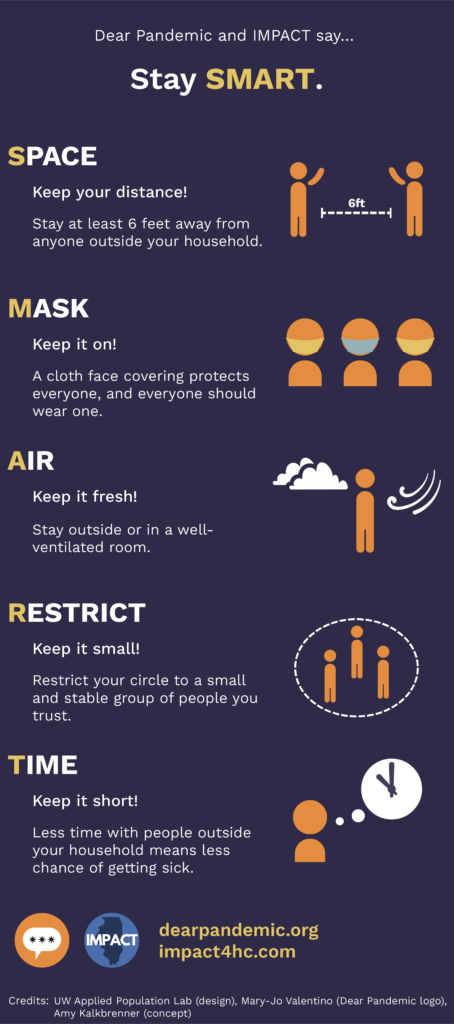A: You are most likely to catch SARS-CoV-2 from the AIR you breathe.
General cleanliness rules for surfaces apply but you can stop obsessive purchases of Lysol and Clorox wipes.
We’ve come a long way from those whimsical days in March when our hands were cracked from too much hand sanitizer and the high touch surfaces in our homes gleamed like diamonds (or coronas?).
What have we learned since then?
• Transmission via touch or surfaces (“fomites”) is not as important as first believed.
• Transmission via breathing in droplets or aerosols exhaled by an infected individual is the dominant mode.
• Proximity still matters, especially closer than 3 feet/1 meter where someone can easily breathe in your face.
• But indoor transmission by aerosols over longer distances can also occur, especially with poor ventilation and forceful exhalation such as singing or loud talking.
• Because air is the dominant form of transmission, both face masks and ventilation are likely better prevention investments than deep cleaning surfaces.
•“Superspreading” or transmission from a small number of people to many others, may be more common with SARS-CoV-2 due to pre-symptomatic and asymptomatic spread. Large indoor gatherings incur the highest risk.
As aerosol scientist Prof. Jose Luis Jimenez suggests, imagine that others you encounter are all smoking, and the goal is to breathe as little smoke as possible. Not being close to the smoker indoors can help, but being outdoors where the smoke is quickly diluted is even better. While face masks and actual smoking don’t mix, the principle of filtering or blocking both outbound and inbound exhalations applies (virus-laden particles are much bigger than smoke).
Increasing evidence from contact tracing also supports aerosols and droplets as the dominant modes of SARS-CoV-2 transmission, with no solid evidence for transmission traced back to surfaces. Poor ventilation and singing or loud talking has been implicated in numerous transmission clusters, including those in bars an churches. Gatherings with close interaction including weddings or funerals also seem particularly hazardous.
A wedding in August in Maine has made recent headlines as a “superspreading” event leading to 170 cases and 7 deaths thus far.
“Superspreading” may be more common with SARS-CoV-2 because people typically have the highest level of the virus in their system shortly before they develop symptoms. So people with active Covid-19 infections continue to go about their lives not knowing that they could be spreading the disease. Compared to other viruses, this secret spread from unknowing infectious hosts seems to be SARS-CoV-2’s superpower.
It’s worth noting that in a recent superspreading event in a Starbucks in Korea leading to infections in 27 customers, all four staff who were wearing masks were not infected.
SARS-CoV-2 transmission is like a wildfire and we are the fuel. Large gatherings and close contact are like pouring gasoline on the fire.
BOTTOM LINE: Mind the AIR and use our #StaySMART principles to deprive the virus of its fuel (see infographic).
Stay safe and stay sane!
Love,
Those Nerdy Girls
______________________________
Lay summary of transmission evidence
Academic review on transmission
Recent posts on aerosol transmission:



